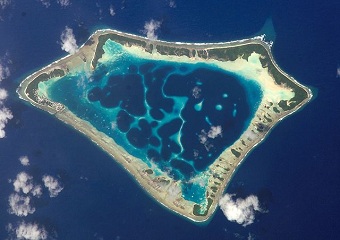Meet the world's first 100% solar-powered nation
 They might look like tiny specks in the Pacific Ocean, but the Tokelau islands have accomplished a big feat. Tokelau, a territory of New Zealand consisting of three atolls, has become the world’s first nation to get all of its electricity from solar power.
They might look like tiny specks in the Pacific Ocean, but the Tokelau islands have accomplished a big feat. Tokelau, a territory of New Zealand consisting of three atolls, has become the world’s first nation to get all of its electricity from solar power.Before making the switch to solar, the territory — with a population of about 1,500 people — was entirely dependent on diesel for their electricity generation. According to AFP, the switch wasn’t just about being green:
Project coordinator Mike Bassett-Smith said the diesel was not only environmentally unfriendly, it also cost the islands, which lie about halfway between New Zealand and Hawaii, around NZ$1.0 million ($825,000) a year.
Bassett-Smith, from New Zealand firm PowerSmart Solar, said the change would allow Tokelau to switch money from fuel purchases to social welfare projects.
“For Tokelau, this milestone is of huge importance for their continued well-being,” he said in a statement received Wednesday.
New Zealand spent $7 million on the solar project.
Sure, it might seem like a minor feat with only 1,500 people living on the islands — about the size of tiny town. But consider this: how many towns with small populations can say they are 100 percent solar?
You can return to the main Market News page, or press the Back button on your browser.

